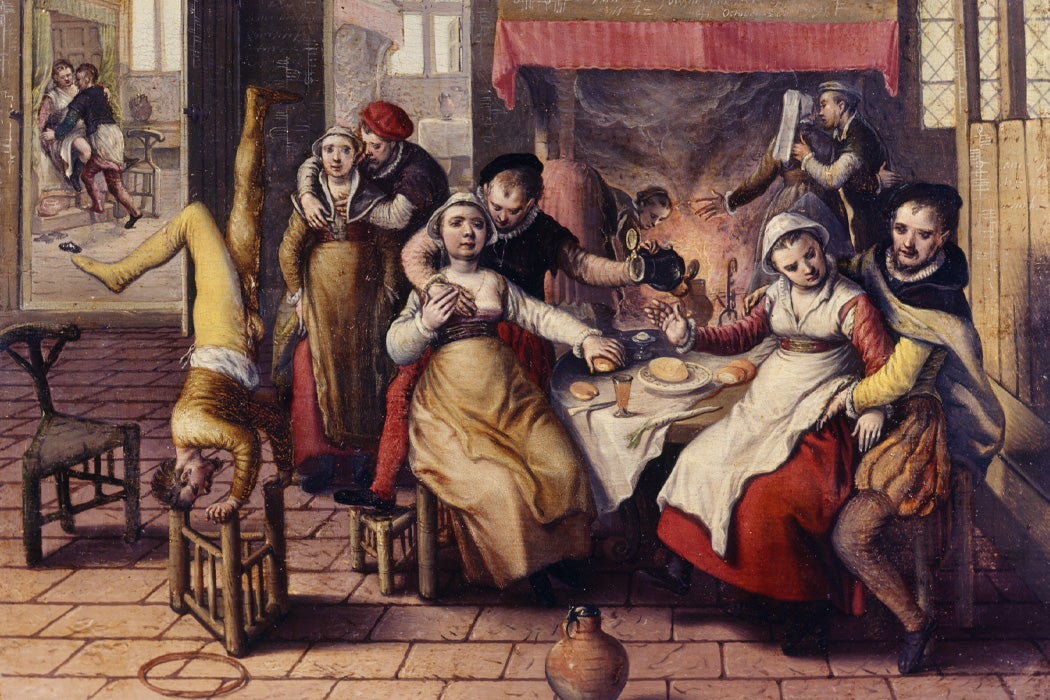In the wake of federal laws that have limited sex workers’ ability to advertise online, a new organization called Decriminalize Sex Work is pushing to end prohibitions on selling sex in the United States. Beyond simply stopping arrests of sex workers, activists say it’s important to think carefully about what legally-permitted sex trade would look like, and whether potential licensing and regulation would help or hurt workers. Historian Ruth Mazo Karras explored the complexities of legal sex work in a different context: Medieval Europe.
Karras, who studies gender and sexuality, writes that throughout Europe, medieval authorities generally recognized sex work as a necessary evil. Theologians followed the teachings of Saint Augustine, who wrote that it was better for sinful men to frequent brothels than to “corrupt” their wives or other respectable women with nonprocreative sex: “Remove prostitutes from human affairs and you will destroy everything with lust.”
Sex workers were acknowledged as useful, and yet the practice of sex work was still seen as terribly sinful. “Lust was considered the woman’s sin par excellence and the prostitute epitomized it,” Karras writes.
Different parts of Europe handled this tension in different ways. Some municipalities licensed brothels, set up red-light districts, or created municipally-owned sex work establishments. Publicly-owned, regulated, or taxed sex trade could be an important source of income for a town. For sex workers, these practices sometimes provided protection. In London, for example, having a legal status freed sex workers from harassment by city authorities. And regulations in Southwark and Sandwich, England, limited brothel owners’ ability to financially exploit workers with predatory loans and high prices for ale.
Official brothels could also breed collective action by bringing the workers together under one roof. In several cases, French sex workers organized to protest when a female brothel keeper was replaced by a man, or when other sex workers operating clandestinely threatened their business.
But official status and recognition could also be a tool for controlling workers. Regulations often meant they had to work, and sometimes live, in a brothel. Some municipal brothels in continental Europe restricted sex workers’ mobility and limited their ability to leave the profession. In some cases, the rules also made it clear that women could be raped. “As a municipal service, prostitution was made available to all who qualified, and the women who provided it had no say in determining how their bodies were to be used,” Karras writes.
Once a Week
Today, police often use stereotypes about sex trafficking against immigrants. Similarly, in Medieval Europe, official rules and patterns of enforcement sometimes targeted minorities. A 1393 London ordinance limiting the parts of the city where sex workers could operate attributed problems with the trade specifically to “Flemish women, who profess and follow such shameful and dolorous life.”
For activists and policymakers considering the status of sex work today, medieval examples suggest that what’s important is not just legal status but how regulations affect workers’ ability to control their working conditions.







